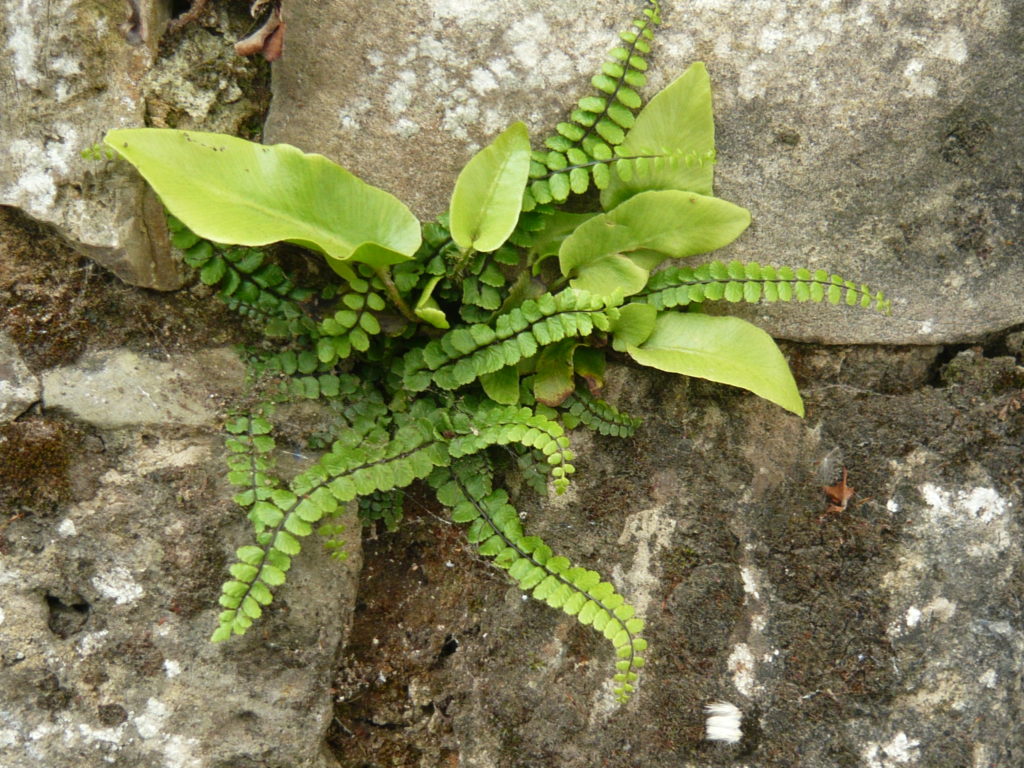Fine Ferns and Damp Moss

I am not a great fan of ferns as I live too near moorland that shares its bounty with gay abandon and I spend significant time removing uninvited guests. These are usually Bracken (Pteridium aquilinum) or Buckler-fern (Dryopteris
dilatata) with fronds that are arranged like a shuttlecock. There are some exceptions such as the Hart’s tongue (Asplenium scolopendrium) and the Maidenhair Spleenwort (Asplenium trichomanes) shown in this wall. The strap like fronds and pinnate rectangular leaflet fronds make a simple feature on this mossy wall.
Ferns Favourite Locations
- Due to the microscopic airborne spores British species of ferns can grow in many unusual places such as rocky habitats.
- Woodland ferns such as Dryopteris species are easy and accommodating in the garden.
- The striking Osmunda regalis aka The Royal Fern prefers a wetland area.
- There are several ferns suitable for ground cover and a selection can be found on the native fern website
Â